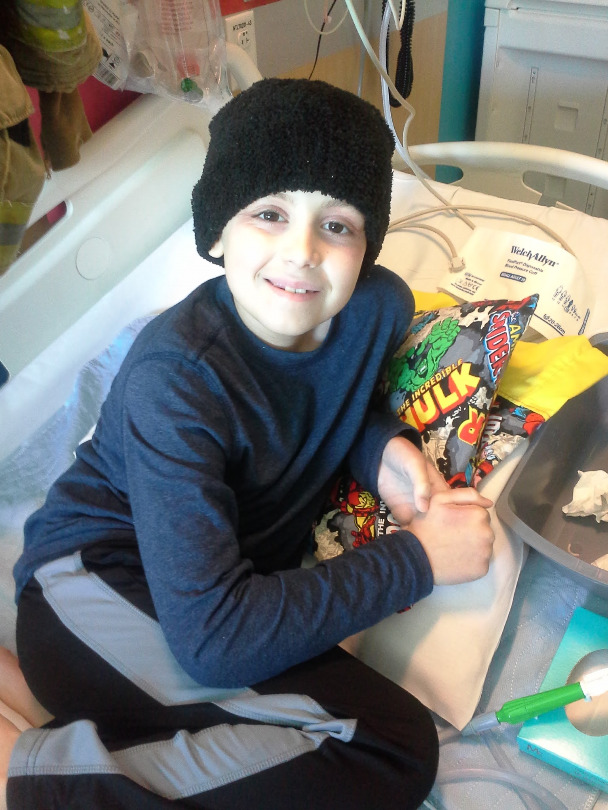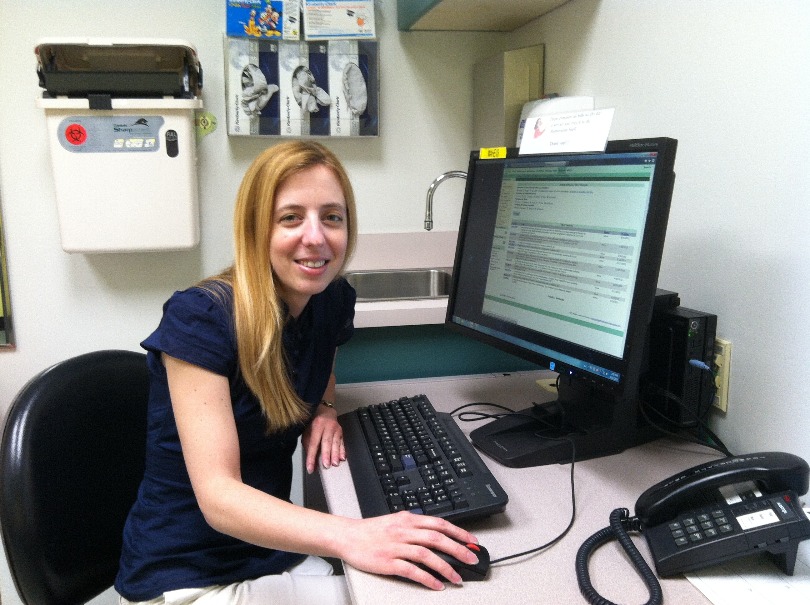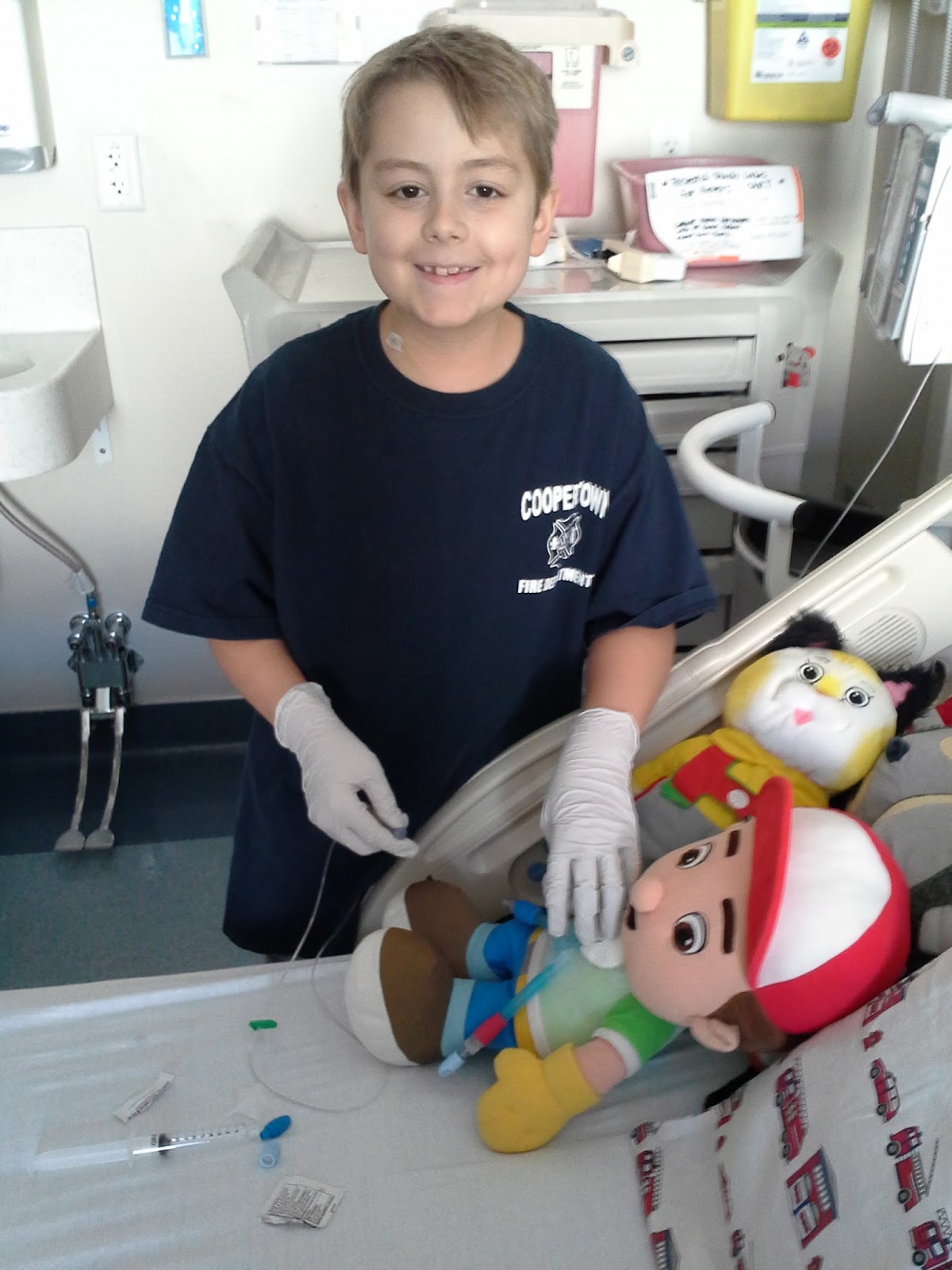Over a series of four blogs — catch up with parts one and two about the Phase 1 trial — we are tracing the path of Kymriah, a recent immunotherapy and gene therapy breakthrough for kids with high-risk leukemia, like Honored Kid Ori.
After relapsing for the second time and with his cancer spreading to his nervous system, Ori’s best chance at life was a Phase 2 trial of this experimental CAR T cell therapy. With a sunny attitude and staggering strength of spirit, Ori gave this new treatment a shot – with astonishing results.

Ori was in cancer treatment for much of his young life and throughout the journey, his strength and positive attitude have been remarkable. “He has been through so much, but has done it all with a great attitude and a smile on his face,” said his mom, Kaye.
When a child with cancer relapses the first time, their treatment options shrink. But when a child with cancer relapses again, their options and chances at survival don’t just shrink – they’re nearly extinguished. That is what happened to Ori.
The boy was just 2 years old when he was diagnosed with acute lymphoblastic leukemia (ALL) after his parents noticed unusual bruising on the tot and near constant fevers.
After more than three years of treatment, the cancer came back. Then, after three more years of grueling treatment, it came back again. Ori was then 9 years old.
.jpg)
Since Ori’s diagnosis in 2008 — a year before this photo was taken — friends and family had been asking how they could help. After discovering St. Baldrick’s, Kaye finally had an answer. “I wanted everyone to know that they had the power to help cure our son,” she said. “They could donate to St. Baldrick’s, an organization that was and is literally funding the research that could cure kids like Ori.” In 2015, the family started a fundraiser with their friends at the Phoenix Fire Department to continue to support this lifesaving research.
But Ori and his family aren’t ones to give up – even though his doctor offered “doing nothing” as one of the sparse options, according to Ori’s mom, Kaye.
Instead, they decided to take a chance on Kymriah.
“Our doctor explained that it was still a very new treatment, but it would be something to consider for Ori, especially since traditional chemo was not proving to be effective. And that time, the leukemia had spread into his central nervous system, something that hadn’t occurred before,” Kaye explained. “We needed to think about something new for him.”
‘Something new’ was a St. Baldrick’s-supported Phase 2 clinical trial that opened in April 2015, a few months before Ori’s second relapse. While a Phase 1 trial looks at whether a new therapy is safe, a Phase 2 trial is the next step and looks at whether the therapy works, explained St. Baldrick’s Scholar Dr. Shannon Maude, who worked on this Kymriah clinical trial at Children’s Hospital of Philadelphia (CHOP). Overseen by St. Baldrick’s – Stand Up to Cancer Dream Team* member Dr. Stephan Grupp, this massive trial involved 25 institutions in 11 countries.
Learn more about how Dream Team* gets kids with cancer closer to cures >
“Phase 2 trials are important to determine what therapies are potentially beneficial and can add to our repertoire of options for patients,” she said.

Dr. Shannon Maude received the Rally for Ryan Fund St. Baldrick’s Scholar award in 2013 for her studies into high-risk ALL and whether there may be links between poor prognosis and certain genetic abnormalities.
For Ori, the timing couldn’t have been better.
Soon the 9-year-old and his whole family, including their dog, were on their way to Utah to start the clinical trial process in Salt Lake City. The hopeful plan was for Ori to receive Kymriah, achieve remission and then get a bone marrow transplant for the best shot at survival.
But Kaye was nervous.
“There had only been 60 kids before Ori who had had the treatment, so all of the data was still new and unreliable,” she said. “We were prepared for the worst – a breathing tube, kidney failure, extremely high fevers, days or weeks in the ICU. Sadly, Ori had already experienced most of these during his years of treatment.”
Considered a type of immunotherapy, Kymriah is called a ‘living drug’ because it uses the child’s own immune system. Scientists modify the genes within a patient’s own immune cells, then inject these engineered cells back into the patient’s body. These cells – called CAR T cells or chimeric antigen receptor T cells – then find, attack and kill leukemia cells.
Get your questions about immunotherapy answered in this Q&A with the lead investigator of the Kymriah trial >
This process can cause a side effect called cytokine release syndrome, otherwise known as a cytokine storm.

On day four after the infusion of Kymriah, Ori felt well enough to play doctor.
For Ori, it appears that these modified immune cells swarmed his central nervous system, causing intense headaches, bouts of dizziness and nausea. The symptoms were, thankfully, short lived. Ori regained his strength and successfully completed a bone marrow transplant.
“[Kymriah] rid his body of the cancer like the chemo had never done,” Kaye said. “It was truly amazing.”
Ori’s experience is quite the success story. But it’s not the only one.
In that global study headed by Dream Team* member Dr. Grupp, 83% of patients went into a complete remission after a single dose of Kymriah, according to information from the University of Pennsylvania and CHOP.
“This therapy has offered hope for many patients for whom, five years ago or 10 years ago, we really wouldn’t have had a lot of options,” Dr. Maude said. “We have seen children who had been through many therapies – and those therapies had failed them – go on to respond to this and go back to school and go back to playing baseball and go back to getting their childhood back.”
.jpg)
Ori, now 11 years old, gives his signature thumbs up.
Two years later, Ori is still in remission, and with each bike ride in the fresh air and playful romp with his new dog, he’s doing just what Dr. Maude said. He’s getting his childhood back.
That’s thanks to kids’ cancer research and the funding that makes it possible.
Without funding for childhood cancer research, the ending to Ori’s story likely would have been very different.
“Since traditional chemo was not working to rid his body of cancer, he may not have made it into remission. If he wasn’t able to get into remission, he wouldn’t have been able to have a transplant. Without a transplant, he would have died,” Kaye said. “It’s just that simple. Kymriah changed our world.”
You can change the world of kids like Ori. Fund lifesaving research today.
*Formerly known as the St. Baldrick’s – Stand Up to Cancer Pediatric Cancer Dream Team, this team is now the St. Baldrick’s EPICC Team (Empowering Pediatric Immunotherapies for Childhood Cancer).
Read more about Kymriah on the St. Baldrick’s blog:

 SBF
Tweets »
SBF
Tweets »